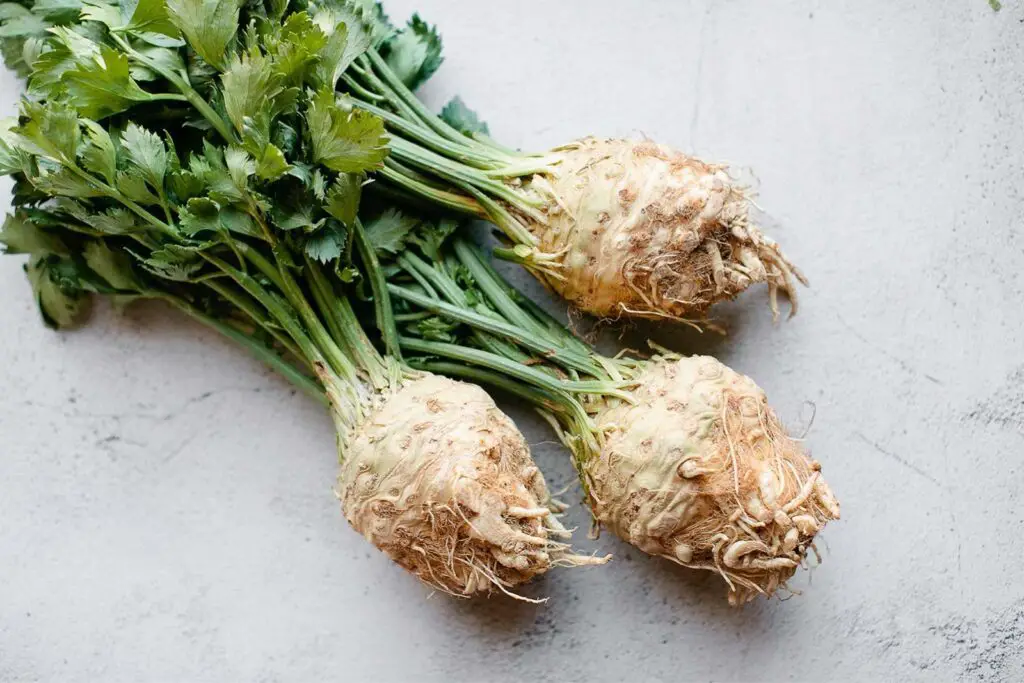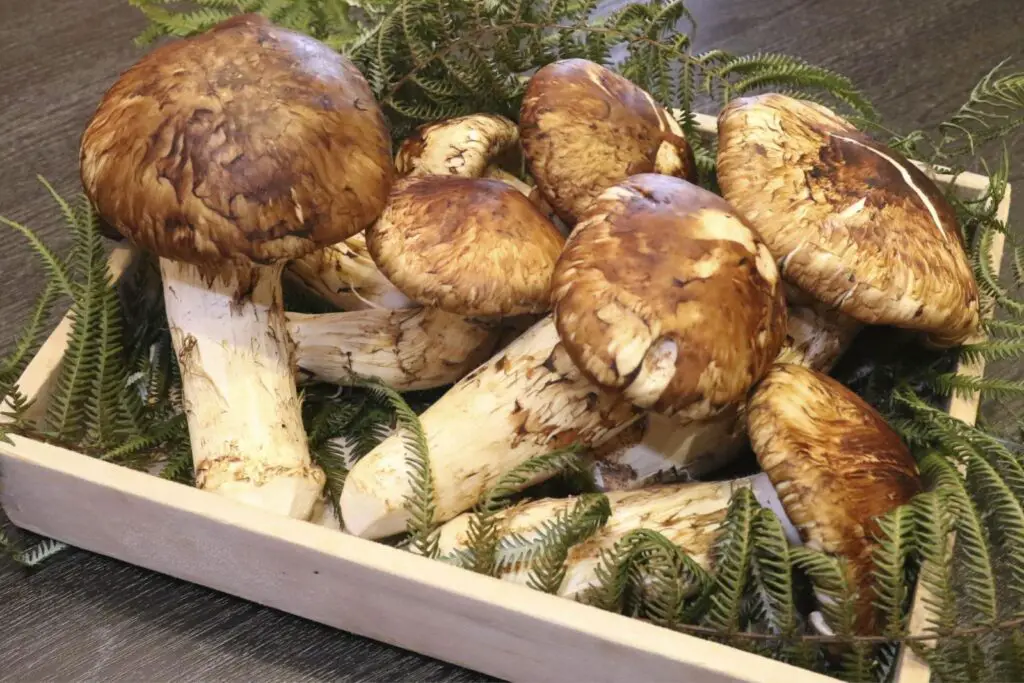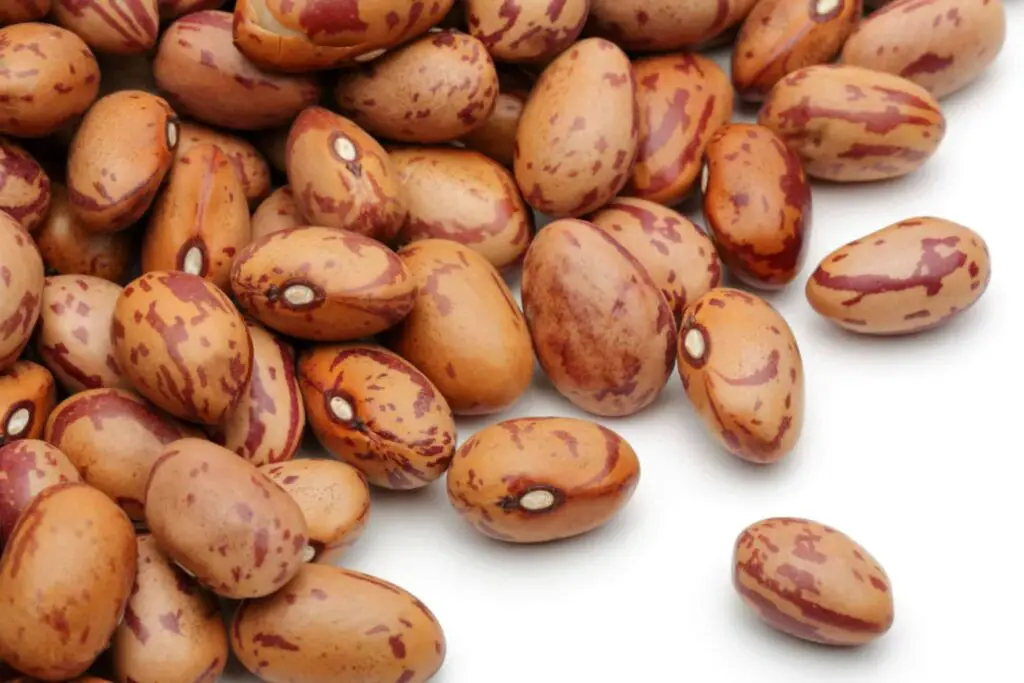
Cubanelle peppers, also known as Italian frying peppers, are a vibrant and flavorful ingredient that adds a mild heat and crisp texture to a variety of dishes. With their elongated shape and light green color, cubanelle peppers are a staple in Mediterranean and Latin American cuisines. They are versatile in the kitchen, whether used in salads, stir-fries, stuffed recipes, or simply sautéed as a side dish. If you have an abundance of cubanelle peppers or want to preserve their freshness for future use, freezing is an excellent option. Freezing cubanelle peppers allows you to extend their shelf life while retaining their vibrant color, taste, and texture. In this guide, we will explore the proper techniques for freezing cubanelle peppers, including blanching, cooling, and packaging methods, so you can have a supply of these flavorful peppers ready to enhance your favorite recipes. Join us as we delve into the world of freezing cubanelle peppers and discover the convenience of having this versatile ingredient at your fingertips, ready to add a touch of Mediterranean flair to your meals throughout the year.
Here are the simple steps to freeze cubanelle peppers:
- Step 1: Select Fresh Cubanelle Peppers
- Step 2: Wash and Remove the Seeds and Membranes
- Step 3: Blanch the Pepper Halves
- Step 4: Drain and Dry the Pepper Halves
- Step 5: Arrange the Pepper Halves for Freezing
- Step 6: Flash-Freeze the Pepper Halves
- Step 7: Package and Seal
- Step 8: Label and Date
- Step 9: Store in the Freezer
Step 1: Select Fresh Cubanelle Peppers
To ensure the best quality when freezing Cubanelle peppers, it’s crucial to start with fresh peppers. Here’s how to choose the right ones:
- Look for freshness: Select Cubanelle peppers that are fresh and vibrant in color. Avoid peppers that appear dull or have wrinkled skin, as these are signs of aging. Fresh peppers will have a crisp texture and a healthy appearance.
- Check for firmness: Gently squeeze the peppers to feel their firmness. Fresh Cubanelle peppers should be firm and have a slight resistance when pressed. Avoid peppers that feel soft or mushy, as they may be overripe or starting to spoil.
- Inspect for blemishes: Examine the peppers carefully for any blemishes, spots, or discoloration. Choose peppers that are free from any signs of decay, mold, or rot. These imperfections can affect the quality of the frozen peppers and lead to spoilage.
- Evaluate the stems: The stems of fresh Cubanelle peppers should be green, firm, and attached securely to the pepper. Avoid peppers with wilted or dried-out stems, as they indicate older or less fresh peppers.
By selecting fresh Cubanelle peppers, you ensure that the frozen peppers will have the best flavor, texture, and nutritional value. Remember to handle the peppers carefully to avoid bruising or damaging them during the selection process.
Step 2: Wash and Remove the Seeds and Membranes
Properly washing and preparing the Cubanelle peppers before freezing is essential to ensure cleanliness and remove any unwanted parts. Follow these steps to wash and remove the seeds and membranes:
- Rinse under cool water: Place the Cubanelle peppers under cool running water. Gently rub the peppers with your hands to remove any dirt or residue. This step helps eliminate any surface contaminants and ensures that the peppers are clean.
- Slice off the tops: Using a sharp knife, carefully slice off the tops of the peppers. Removing the tops makes it easier to access the seeds and membranes inside.
- Cut the peppers in half lengthwise: Lay the peppers on a cutting board and slice them in half lengthwise from the stem end to the tip. This exposes the inner part of the pepper for seed and membrane removal.
- Remove the seeds and membranes: Using a small spoon or your fingers, gently scrape out the seeds and membranes from each pepper half. Cubanelle peppers typically have fewer seeds and membranes compared to hotter pepper varieties. Ensure that all the seeds and membranes are removed to prevent any bitter flavors or unwanted textures in the frozen peppers.
- Rinse again (optional): If desired, you can rinse the pepper halves once more under cool water to ensure that any remaining seeds or membranes are washed away. However, this step is optional, as long as you have thoroughly removed the seeds and membranes during the previous step.
By washing the Cubanelle peppers and removing the seeds and membranes, you eliminate any potential grit or bitterness. This step also makes the peppers more convenient to use in future recipes, as you won’t need to remove the seeds and membranes when cooking with the frozen peppers.
Step 3: Blanch the Pepper Halves
Blanching is an essential step in freezing Cubanelle peppers as it helps preserve their quality and prevents enzymatic activity that can lead to flavor and texture changes. Here’s how to blanch the pepper halves:
- Prepare boiling water and ice water bath: Fill a large pot with water and bring it to a rolling boil. Meanwhile, prepare a bowl filled with ice and cold water. This will be used to quickly cool down the peppers after blanching.
- Place the pepper halves in boiling water: Carefully add the pepper halves to the boiling water. Ensure that they are fully submerged. You can blanch a few pepper halves at a time, depending on the size of your pot, to avoid overcrowding.
- Cook for 2 minutes: Allow the pepper halves to cook in the boiling water for approximately 2 minutes. Blanching for this short period helps inactivate enzymes that could cause loss of flavor, color, and texture during freezing.
- Transfer to the ice water bath: Using a slotted spoon or tongs, quickly remove the pepper halves from the boiling water and transfer them immediately to the prepared ice water bath. Submerging the peppers in ice water rapidly cools them down, halting the cooking process and preserving their vibrant color and crispness.
- Allow peppers to cool completely: Let the pepper halves sit in the ice water bath for a few minutes until they are completely cool. This ensures that any residual heat is eliminated and prevents the peppers from overcooking.
Blanching the Cubanelle pepper halves before freezing helps to retain their flavor, color, and texture. It also helps to maintain their nutritional value. By following this step, you can ensure that the frozen Cubanelle peppers will taste fresh and vibrant when you use them in your future dishes.
Step 4: Drain and Dry the Pepper Halves
After blanching the Cubanelle pepper halves, it’s important to remove excess moisture before freezing them. Here’s how to drain and dry the pepper halves effectively:
- Remove the pepper halves from the ice water bath: Using a slotted spoon or tongs, carefully lift the pepper halves out of the ice water bath, allowing any excess water to drain off.
- Shake off excess water: Give the pepper halves a gentle shake to remove as much water as possible. This helps minimize the moisture content on the peppers, reducing the chances of freezer burn.
- Pat dry with a clean kitchen towel or paper towels: Place the pepper halves on a clean kitchen towel or a layer of paper towels. Gently press another towel or paper towels on top of the peppers to absorb any remaining moisture. Pat them dry, being careful not to crush or deform the peppers.
- Ensure thorough drying: Pay close attention to the crevices and surfaces of the pepper halves, as these areas tend to retain water. Make sure to dry both the interior and exterior of the peppers thoroughly. Excess moisture can contribute to the formation of ice crystals and result in freezer burn, which can negatively affect the quality of the frozen peppers.
By draining and thoroughly drying the Cubanelle pepper halves, you minimize the risk of freezer burn and maintain the best possible texture and flavor when they are thawed and used in future dishes. Properly dried pepper halves also prevent ice crystals from forming, preserving the overall quality of the frozen peppers.
Step 5: Arrange the Pepper Halves for Freezing
Properly arranging the Cubanelle pepper halves before freezing ensures that they freeze individually and don’t stick together. Follow these steps to arrange the pepper halves for freezing:
- Prepare a baking sheet or tray: Line a baking sheet or tray with parchment paper. This prevents the pepper halves from sticking to the surface and makes it easier to remove them later.
- Lay the pepper halves in a single layer: Place the pepper halves on the prepared baking sheet or tray, making sure they are arranged in a single layer. Ensure that the pepper halves are not touching or overlapping each other. This spacing prevents them from freezing together, allowing you to easily separate and portion them later.
- Provide enough space: Leave a small gap between each pepper half to ensure proper air circulation during freezing. This helps maintain the quality and prevents any moisture buildup between the peppers.
- If needed, use multiple baking sheets or trays: If you have a large quantity of pepper halves, you may need to use multiple baking sheets or trays to accommodate them all. It’s important to maintain the single-layer arrangement on each sheet or tray to ensure even freezing.
By arranging the Cubanelle pepper halves in a single layer without touching each other, you ensure that they freeze individually. This arrangement prevents them from clumping together, making it easier to take out the desired amount of frozen pepper halves when needed.
Step 6: Flash-Freeze the Pepper Halves
Flash-freezing the Cubanelle pepper halves individually helps prevent them from clumping together during freezing. Here’s how to flash-freeze the pepper halves:
- Transfer the baking sheet or tray to the freezer: Carefully place the baking sheet or tray with the arranged pepper halves in the freezer. Make sure it sits flat and is not tilted to prevent the pepper halves from sliding or shifting during freezing.
- Allow them to freeze for 1 to 2 hours: Leave the pepper halves in the freezer for approximately 1 to 2 hours, or until they are firm to the touch. Flash freezing at a lower temperature and for a shorter time period helps preserve the peppers’ texture and prevents them from sticking together.
- Check for firmness: After the recommended freezing time, gently touch one of the pepper halves to check its firmness. The pepper halves should be completely frozen and rigid to the touch. If they are still soft or bend easily, give them a bit more time in the freezer until they reach the desired firmness.
Flash-freezing the Cubanelle pepper halves individually ensures that they freeze quickly and retain their individual shapes. This prevents them from clumping together and makes it easier to remove and portion the desired amount of frozen pepper halves when needed.
Step 7: Package and Seal
Proper packaging and sealing of the frozen Cubanelle pepper halves are essential to maintain their quality and prevent freezer burn. Follow these steps to package and seal the pepper halves:
- Transfer the frozen pepper halves: Carefully remove the frozen pepper halves from the baking sheet or tray and transfer them to freezer-safe bags or airtight containers. These containers should be specifically designed for freezer use to provide an optimal storage environment.
- Remove excess air: Before sealing the bags or containers, remove as much air as possible from them. Excess air can lead to freezer burn and affect the quality of the frozen peppers. One method to remove air is by using a vacuum sealer, which suctions out the air and creates an airtight seal. If a vacuum sealer is not available, squeeze out the air manually from the bags or containers as much as possible before sealing them tightly.
- Ensure a tight seal: Seal the freezer bags or containers tightly to create a secure closure. For freezer bags, use the zipper lock or press out excess air while sealing. For airtight containers, close them with their corresponding lids, ensuring a snug fit.
By properly packaging and sealing the frozen Cubanelle pepper halves, you create a barrier against air and moisture, minimizing the risk of freezer burn and preserving the peppers’ quality. When you’re ready to use the frozen peppers, simply remove the desired amount from the sealed package, reseal the rest, and return them to the freezer promptly.
Step 8: Label and Date
Labeling and dating the packages of frozen Cubanelle pepper halves is an important step to help you keep track of their storage time and easily identify them in the freezer. Follow these guidelines to label and date the packages:
- Use a marker or label: Grab a marker or use adhesive labels specifically designed for freezer use. These labels should be able to withstand freezing temperatures without smudging or falling off.
- Write the contents: Clearly write “Cubanelle Pepper Halves” on each label or package. This ensures that you can easily identify the frozen peppers without having to open each package or guess their contents.
- Date of freezing: Indicate the date of freezing on each package. Write the month and day, as well as the year if necessary. This helps you keep track of how long the peppers have been stored in the freezer and ensures that you use them within their recommended storage time.
- Attach the label: Place the label on the front or top of the package, making sure it is easily visible. If using adhesive labels, press them firmly onto the package to ensure they stay in place.
By labeling and dating the packages of frozen Cubanelle pepper halves, you maintain organization and prevent confusion in your freezer. This practice allows you to easily identify the peppers and use them within their optimal storage time. When you’re ready to prepare a dish using the frozen peppers, you can confidently choose the package with the desired date and enjoy their fresh flavors.
Step 9: Store in the Freezer
Proper storage of the sealed packages of frozen Cubanelle pepper halves is crucial to maintain their quality and extend their shelf life. Follow these steps to store the frozen peppers effectively:
- Choose an appropriate location: Find a dedicated space in your freezer to store the sealed packages of Cubanelle pepper halves. Ideally, this should be a location where the temperature remains constant, such as the back of the freezer. Avoid placing the peppers near the freezer door or in areas that are prone to temperature fluctuations.
- Set the freezer temperature: Ensure that your freezer is set to a temperature of 0°F (-18°C) or below. This low temperature helps maintain the quality of the frozen peppers and keeps them safe from bacterial growth.
- Organize the packages: Arrange the sealed packages in a way that maximizes space and allows for easy access. You can stack the packages vertically or lay them flat, depending on the available space and the size of your freezer.
- Prevent exposure to air and moisture: Ensure that the sealed packages are fully closed and airtight to prevent air and moisture from entering. This helps maintain the peppers’ quality and prevents freezer burn.
- Monitor storage time: Frozen Cubanelle peppers can be safely stored for approximately 8 to 12 months. To ensure the best flavor and quality, try to use them within this time frame. Regularly check the packages for any signs of freezer burn or deterioration and discard any packages that show these signs.
By storing the sealed packages of Cubanelle pepper halves in a well-maintained freezer at the recommended temperature, you can extend their shelf life and ensure they remain in optimal condition for future use. Remember to keep track of the storage time and consume the peppers within the recommended duration for the best results.
Other related questions
How do you defrost cubanelle pepper?
To defrost Cubanelle peppers, transfer the frozen pepper halves from the freezer to the refrigerator. Allow them to thaw slowly in the refrigerator for several hours or overnight. Once fully thawed, use the defrosted Cubanelle peppers in your desired recipe.
Can you refreeze cubanelle pepper?
Refreezing Cubanelle peppers is not recommended as it can negatively impact their quality and texture. Once the peppers have been thawed, their structure and moisture content may have changed, resulting in a loss of flavor and texture. It is best to use the thawed Cubanelle peppers promptly to maintain their optimal taste and quality.
How do I know if the cubanelle pepper has gone bad after being frozen?
After being frozen, you can determine if a Cubanelle pepper has gone bad by examining its appearance and smell. Look for any signs of freezer burn, such as discoloration, dryness, or ice crystals on the pepper’s surface. If the pepper exhibits a slimy texture or emits an off-putting odor, it is likely spoiled and should be discarded. Trust your senses and avoid consuming frozen Cubanelle peppers that show signs of deterioration.
Can you freeze cubanelle peppers with added seasoning or herbs?
es, you can freeze cubanelle peppers with added seasoning or herbs. Before freezing, it’s best to clean, deseed, and slice the peppers if desired. Toss the peppers with your preferred seasoning or herbs, ensuring they are evenly coated. Arrange the seasoned peppers in a single layer on a baking sheet and place them in the freezer until firm. Once firm, transfer the peppers to freezer-safe containers or bags, properly sealed and labeled. When you’re ready to use them, thaw the frozen peppers and incorporate them into your desired recipes.
Can you freeze cubanelle peppers for stuffing or roasting purposes?
Yes, you can freeze cubanelle peppers for stuffing or roasting purposes. Start by cleaning and deseeding the peppers, and then prepare them according to your preferred recipe. For stuffing, fill the peppers with the desired mixture, such as rice or meat, before freezing. For roasting, you can freeze the peppers as whole or sliced.
Can you freeze cubanelle peppers with a mild or spicy flavor?
Cubanelle peppers, known for their mild to moderately spicy flavor, can be successfully frozen. Begin by cleaning and deseeding the peppers, then slice or leave them whole depending on your preference. Arrange the prepared peppers in a single layer on a baking sheet and freeze until firm. Transfer the frozen peppers to airtight containers or bags, ensuring they are properly sealed and labeled.
Can you freeze cubanelle peppers with a green or ripe color?
Cubanelle peppers can be frozen regardless of their color, whether they are green or ripe. Begin by cleaning and deseeding the peppers, and then prepare them according to your preference, either sliced or whole. Arrange the prepared peppers in a single layer on a baking sheet and freeze until firm.
Can you freeze cubanelle peppers with a thin or thick skin?
Cubanelle peppers, characterized by their thin skin, can be frozen without any issues. Start by cleaning and deseeding the peppers, and then prepare them according to your preference, either sliced or whole. Arrange the prepared peppers in a single layer on a baking sheet and freeze until firm.








